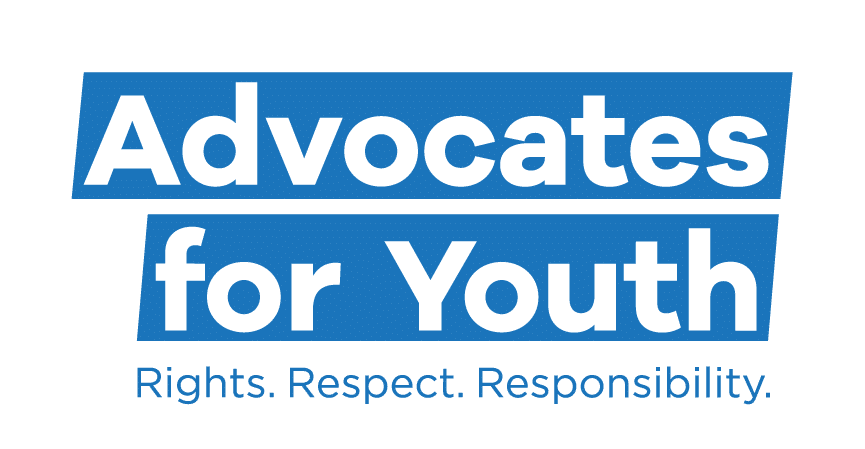Science Behind 3Rs
Sex Education Grounded in Science
Rights, Respect, Responsibility builds on 30 years of research into effective sexuality education programs, while respecting young people’s right to the information they need to protect their health and make responsible decisions. It follows the National Sexuality Education Standards for what students should learn and be able to do at each grade level, and it is inclusive of learners of all genders and sexual orientations. Rights, Respect, Responsibility is intended for use with students in Kindergarten through 12th grade. Its lessons are scaffolded, and age-appropriate, beginning with basic lessons about friendship and safety, and introducing more complex concepts as students age. In this section you will find the scientific foundation of Rights, Respect, Responsibility.
Evidence Underlying this Curriculum

Rights, Respect, Responsibility is a curriculum that is fully meets the National Sexuality Education Standards. The curriculum seeks to address both the functional knowledge related to sexuality and the specific skills necessary to adopt healthy behaviors.
Rights, Respect, Responsibility reflects the tenets of social learning theory, social cognitive theory and the social ecological model of prevention.
From social learning theory, which recognizes that “learning occurs not merely within the learner but also in a particular social context,” there are several key concepts addressed within Rights, Respect, Responsibility, including:
Personalization. The ability of students to perceive the core content and skills as relevant to their lives increases the likelihood that they will both learn and retain them. Ensuring that students see themselves represented in the materials and learning activities used can assist in furthering personalization.
Susceptibility. It is widely understood that many young people do not perceive that they are susceptible to the risks of certain behaviors, including sexual activity. Learning activities should encourage students to assess the relative risks of various behaviors, without exaggeration, to highlight their susceptibility to the potential negative outcomes of those behaviors.
Self-Efficacy. Even if students believe they are susceptible, they may not believe they can do anything to reduce their level of risk. Helping students overcome misinformation and develop confidence by practicing skills necessary to manage risk are key to a successful sexuality education curriculum.


Social Norms. Given that young people are highly influenced by their peers, the perception of what other students are, or are not, doing influences their behavior. Debunking perceptions and highlighting positive behaviors among teens (i.e., the majority of teens are abstinent in middle school and early high school, and when they first do engage in sexual intercourse many use condoms) can further the adoption of health-positive behaviors.
Skills. Mastery of functional knowledge is necessary but not sufficient to influence behaviors. Skill development is critical to a student’s ability to apply core content to their lives.
In addition to social learning theory, social cognitive theory (SCT) is reflected throughout Rights, Respect, Responsibility. Like social learning theory, SCT emphasizes self-efficacy, but adds in the motivation of the learners and an emphasis on the affective or emotional learning domain, an invaluable component of learning about human sexuality.
Finally, the social ecological model of prevention also informed the development of this curriculum. This model focuses on individual, interpersonal, community and society influences and the role of these influences on people over time. Developmentally, the core content and skills for kindergarten and early elementary focus on the individual student and their immediate surroundings (e.g., their family). At the middle and high school levels, core content and skills focus on the expanding world of students that includes their friends and other peers, the media, society and cultural influences.
Rights, Respect, Responsibility and the National Sexuality Education Standards
The National Sexuality Education Standards (NSES)
Clear, consistent and straightforward guidance on the essential minimum, core content for sexuality education that is developmentally and age-appropriate for students in grades K–12.
Building a Foundation for Sexual Health Is a K–12 Endeavor
Evidence Underpinning the National Sexuality Education Standards
Rights, Respect, Responsibility Mapped Against the National Sexuality Education Standards
A spreadsheet detailing which NSES indicator(s) each lesson meets
Characteristics of Effective Sexuality Education
Doug Kirby, the premier researcher on elements of sexuality education that were effective to create desired outcomes, created a list of characteristics of effective programs published in 2007 and reprinted here.
- Focuses on specific behavioral outcomes.
- Addresses individual values and group norms that support health-enhancing behaviors.
- Focuses on increasing personal perceptions of risk and harmfulness of engaging in specific health risk behaviors, as well as reinforcing protective factors.
- Addresses social pressures and influences.
- Builds personal and social competence.
- Provides functional knowledge that is basic, accurate and directly contributes to health- promoting decisions and behaviors.
- Uses strategies designed to personalize information and engage students.
- Provides age-and developmentally appropriate information, learning strategies, teaching methods and materials.
- Incorporates learning strategies, teaching methods and materials that are culturally inclusive. Provides adequate time for instruction and learning.
- Provides opportunities to reinforce skills and positive health behaviors.
- Provides opportunities to make connections with other influential persons.
- Includes teacher information and plan for professional development and training to enhance effectiveness of instruction and student learning.1
Learn more about sexuality education: Sexuality Education: Building an evidence- and rights-based approach to healthy decision-making
1 Kirby, D., Rolleri, L. A., Wilson, M. M. Tools to Assess Characteristics of Effective Sex and STD/HIV Education Programs (TAC). 2007.
